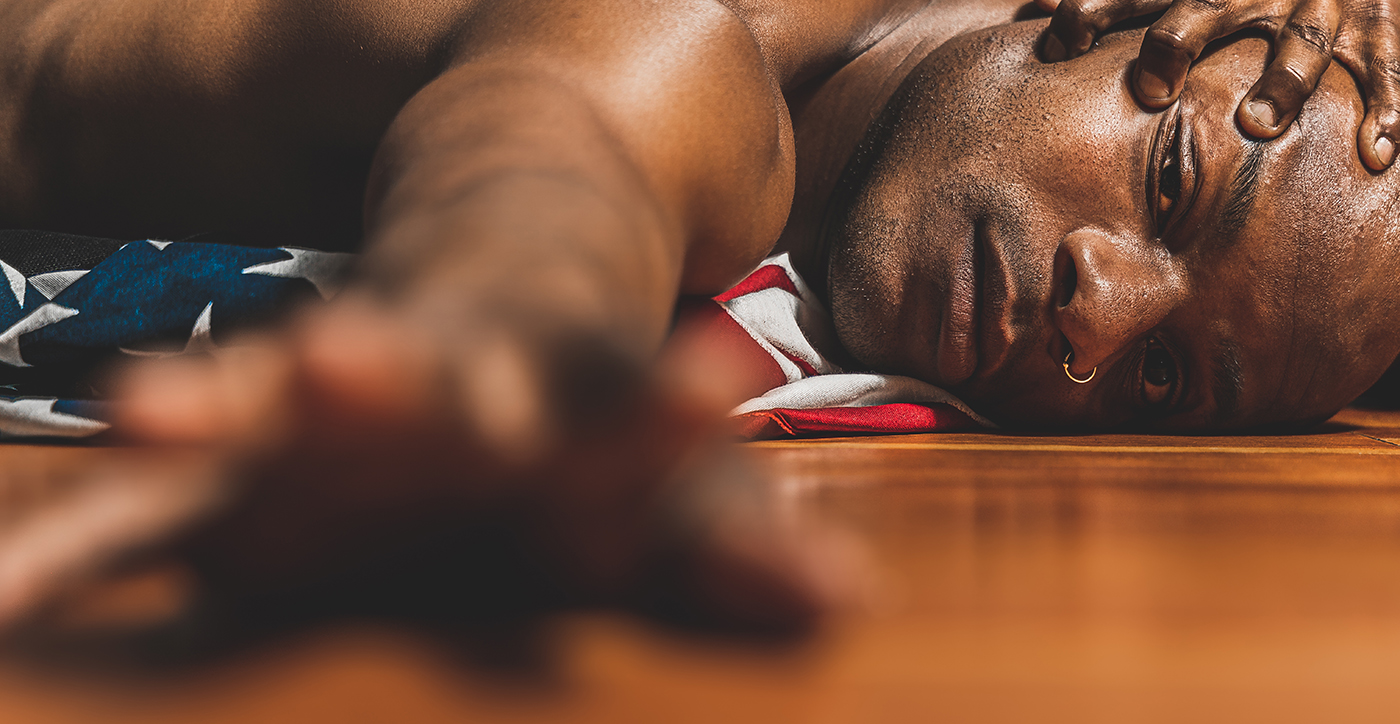
Bold & Beautiful – SLUG LGBTQ+: Ya-Ya Fairley
Art and Fashion

During a time when the world seems to have come to quite the standstill, Yasin “Ya-Ya” Fairley hasn’t stopped moving. This Black, queer, trans, performance artist has been “navigating oppression while living and dancing on the margins,” she says. Originally from Newark, New Jersey, this SLC transplant graduated from Bates College with a B.A. in queer studies/anthropology/dance. She went on to study at the University of Utah and received an MFA of dance in 2017. Since then, they have been using their modern dance style to educate audiences all around, on what they call “decentering the white-male gaze and recasting the concept of whiteness back onto itself.” This exquisite artist has been creating provocative performances and teaching improv and dance for over a decade now. Her experiences, when put to the art of modern dance, portray a beautiful message of relentless strength in the face of adversity and the celebration of Black Joy.

“I hope that my performances are able to capture a moment in people’s lives that allow them to simply take a reflexive breath.”
As a trans, Black artist, Ya-Ya’s dance style embodies the pure joy that comes from the act of resistance against a society that has silenced and traumatized Black people for hundreds of years. Their performances reflect raw emotions through which Ya-Ya personally invites her viewers to confront their own whiteness and what that means.
“Modern dance has been an effective entry point for me in articulating concepts of identity expression and oppression through my/the body,” Ya-Ya says. “It takes a tremendous amount of time to build up to the complex emotionalities I typically conjure up in my pieces. Taking time to explore my inner world—asking questions back to my queer-child body, revisiting ancestors through ritual work, feeding my altar, dancing out traumas in my bedroom, reflexive writing, etc.” Her style is strong and beautiful, such that one can only help but wonder where she draws the strength and energy to accurately depict such raw and intimate emotions.
“There is a blending of reading, writing and dancing that happens in the studio.”
One of her most memorable performances took place in New York City in 2018. There, she performed with Bill T. Jones/Arnie Zan Dance Company at the Park Ave Armory. Ya-Ya—along with a hundred other queer, Black, trans and non-normative-bodied community dancers—performed a piece entitled A Deep Blue Sea. To her, “it was incredibly transformative being surrounded by a cadre of hyper-talented movers and thinkers in NYC,” she says. As both a performer and a teacher, when conceptualizing and choreographing her pieces, her approach is calculated, starting with an idea taken from news articles, a poem or a theoretical concept that speaks to her and the act of building a story comprising movements and sounds.

“From there, I build movement phrases based off of the spillage that occurs with my exploration of the text,” she says. “There is a blending of reading, writing and dancing that happens in the studio … I’m deeply inspired by Alicia Garza, Opal Tometi and Patrisse Cullors, the illustrious founders of the Movement for Black Lives, all Black, queer women who offered a freshly devised gender politics interlaced throughout the coalition-building structures. This impacts my work in how I build radical spaces in the spirit of protest pieces … I invite the audience into my inner world through the sound, where they can experience the painfully poetic forms of my lived experience through the sonic environment of the piece.”

Politics play an important role in Ya-Ya’s work, as she constantly uses her body to express injustices experienced by herself and other Black, queer and trans people. She admits that she is still working herself to “make linkages between the tragic moments in my life,” even pre-pandemic, in a way that is “packaging it into a neat little performance,” she says.
“I feel like my art is oftentimes the only thing that I can have and hold onto in this cold world.”
“Facets of my identity have been confronted with direct acts violence, which has resulted in houselessness, unemployment and psychological abuse,” she says. “I feel like my art is oftentimes the only thing that I can have and hold onto in this cold world.” This is why it’s crucial, as a community, to bring awareness to the real dangers that so many of our trans sisters, brothers and siblings experience, and why we must be sure to lift them up, help create spaces of love and safety, and support them in any way possible.

Ya-Ya uses dance to highlight the dark and also the light. “It feels liberating to be able to grapple with not only theoretical concepts through dance but also infusing it with a politicized aesthetic that feels accessible to the audience,” she says. Ya-Ya feels strongly that as a Black-trans-femme person, she is so personally connected to “hyper-marginalized bodies that, too, are living and dancing on the margins of this culture … I hope that my performances are able to capture a moment in people’s lives that allow them to simply take a reflexive breath. I hope that dancers/artists from multiple races, genders, sexualities and abilities feel affirmed and seen in my work. I want to inspire them to have a conversation with the work, to sit down with the work and respond in radically tender ways.”
If you would like to become involved and join the conversation, consider checking out the Utah Black Artists Collective (aka UBLAC), which Ya-Ya is a member of and “an incredible place to start,” she says. Many of her pieces can be found online for your viewing pleasure at yasinFairley.wixsite.com/yayadance or on Youtube.com/TheBobcatkid12. You can also support her on Venmo @Yasin Fairley, so please consider tipping our local artists like Ya-Ya as a sign of gratitude for the beauty, education and message she works tirelessly and selflessly to bring to the world.
